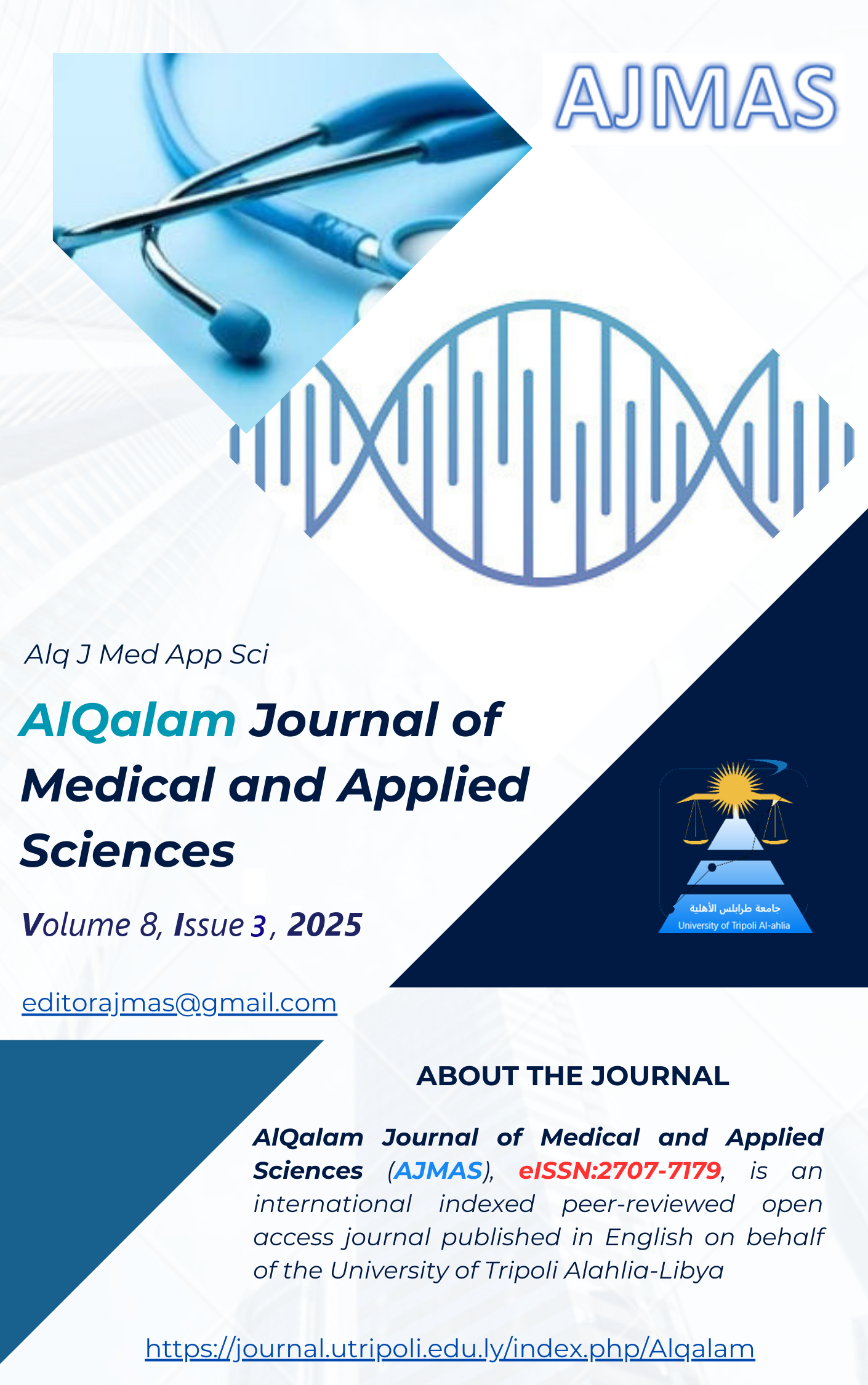Estimating The Risk Function in Light of The Pressures That Kidney Failure Patients are Exposed
DOI:
https://doi.org/10.54361/ajmas.2583105Keywords:
Comparison Criteria, Goodness-of-Fit Test, Kidney Patients, Mixed Survival Distribution, Mixed Hazard Function.Abstract
This article sheds light on the mixed survival distribution, emphasizing its potential for describing the survival behavior of kidney failure patients under the stressors they encounter in their daily lives. The analysis focused on the mixed hazard function derived from the mixed survival distribution, with the parameters of the distribution and its associated functions estimated to better understand the behavior of the hazard function over time. A goodness-of-fit test was applied to evaluate how well the data fit the mixed distribution, while comparison criteria were employed to identify the most suitable distribution compared to classical models. The mixed hazard function was further compared with the Weibull hazard function. To illustrate its applicability, real data were used, representing the survival times to death for 153 patients at the Kidney Services Center in Al-Khums. The results revealed that the mixed distribution provided an excellent fit to the real data and outperformed the Weibull distribution in representing survival behavior. Moreover, the analysis showed that the hazard function increases over time, indicating a higher probability of death as the disease progresses. The hazard function curves for kidney patients at different stress levels (10%–99%) demonstrated that the probability of being at risk rises with time. At low stress levels (10%), the increase is gradual, whereas at high stress levels (95%), the risk grows substantially. This finding highlights stress as a significant factor that accelerates the rate of risk in kidney patients. Similarly, the cumulative hazard function across different survival periods showed that the accumulated probability of risk exposure increases with survival duration. The cumulative hazard function rises more rapidly at higher stress levels, while the increase is slower at lower stress levels. This indicates that the intensity of stress plays a clear role in accelerating the accumulation of risk among kidney patients.
Downloads
Published
How to Cite
Issue
Section
License
Copyright (c) 2025 Salma Bleed, Rabeeah Abdulsalam

This work is licensed under a Creative Commons Attribution 4.0 International License.















